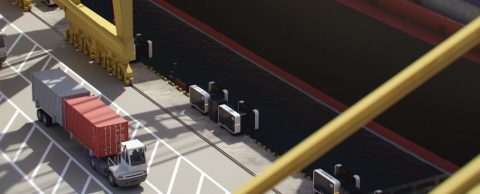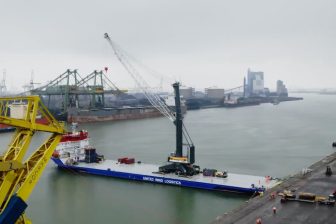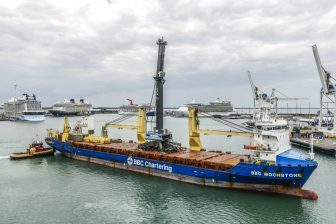
APM Terminals MedPort Tangier investment set to drive down CO2 emissions
APM Terminals MedPort Tangier has committed to reducing absolute emissions by 70% by 2030, and Net Zero emissions by 2040. To achieve this they have investment in the APM Terminals MedPort Tangier will allow them to not only expand the port, but to put in place greener technology.
APM Terminals MedPort Tangier, in Northwestern Morocco, is an automated transhipment terminal, and has been one of the most technologically advanced terminals on the African continent, since it opened in 2019.
Expansion plans will increase the terminal’s quay length from 1200m to 2000m, giving it a surface of 35.5 hectares. Capacity will also be increased by over 2.1 million TEU. Expansion is planned in two more phases: the current phase began in April 2021 and is set to be operational in the first quarter of 2024. The following phase should be finished by the first quarter of the following year.
In addition to the increased capacity the port will also be equipped with technology to reduce CO2 emissions, namely fully electric or hybrid terminal equipment, automated mooring technology, and shore power. According to the United States Environmental Protection Agency (EPA), overall pollutant emissions for vessels connected to shore power can be reduced by up to 98%.
The new electric and hybrid equipment will include 8 electric ship-to-shore cranes, 28 electric automated rail mounted gantry cranes, 23 new semi-automated hybrid shuttle carriers, supplied by Kalmar. Kalmar AutoStrad will also assist with automation of port activities.
A Cavotec auto-mooring system, which uses automated vacuum pads along the extended part of the quay will also be installed. It should improve safety, efficiency, reducing ship idle time by up to three hours, and emissions by more than 90% thanks to reduced use of tugs and ship engines.The Cavotec system’s hydraulics can also reduce vessel motion significantly, which positively impacts the terminal’s crane moves per hour. Indeed, the terminal aims to increase crane moves per hour by four this year.
Image Courtesy of Cavotec MoorMaster




